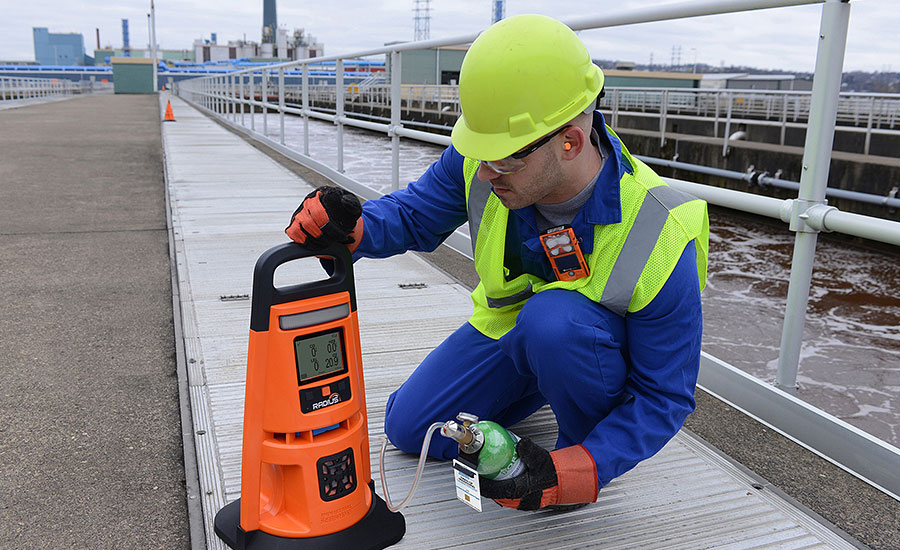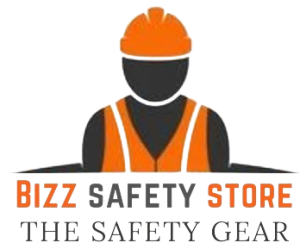Workplace Safety Gas Detection What you need to know about your Gas Detector for work place safety. Your gas detector is a device that detects the presence of various gases within your working or intended working atmosphere. The gas detector will alarm when the presence of a hazardous gas is detected. As your gas detector is a safety device that
will respond to gas levels within the atmosphere it will require regular maintenance, bump testing and calibration to make sure that it is functioning correctly.
Want to know “what is a bump test on a gas detector” or why you should bump test your gas detector? How about calibrating your gas detector? We have put together some useful links for your information on just these topics. Gas detectors for keeping worker’s safe Many hazards cannot be detected by human senses: toxic gases, oxygen deficiency, combustible gases and vapours. All these hazards pose a serious threat to human life and plant safety in many branches of industry. Portable gas detectors alert a worker
early and increase occupational safety. When it comes to reliable gas detection, you can trust on portable gas detectors from Dräger. We have more than 70 years’ experience in this technology and offerfull
range from reliable gas detectors, stations for calibration and bump testing, as well
as software solutions, helpful system components, and accessories. Single-gas detectors
If the danger of toxic gases or vapours can be narrowed down to a single gas or leading substance, single-gas measuring and warning devices are the ideal solution for personal
monitoring in the workplace. Our single-gas detectors are small, robust, and ergonomic. See our highlight products:
Multi-gas detectors
The new generation of multi-gas detectors are ideal for personal protection, areamonitoring, confined space entry (CSE) as well as safety measurements of shafts, channels or tanks. These portable multi-gas detectors deliver reliable measurements, while durable sensors designed in-house guarantee maximum safety coupled withextremely low operating costs. See our highlight products:
Gas detection tubes
Dräger-Tubes make countless applications possible which require measurement resultsto be instantly available. Especially when individual measurements or lowmeasurement
frequencies are sufficient, tubes have advantages compared to electronic equipment. They are comparatively inexpensive and very easy to use. See our highlight products:
Advanced options for your tasksDräger gas detectors offer a wide range of special system components and accessoriesmake it easier to work. We continuously invest in sensor technology, testing andcalibration stations and digital solutions to make professional instrument management
possible – all to make sure that all is ready to use at a moment’s notice. Calibration and bump testingOur calibration and bump test tools lighten your work and speed up your work
processes.
Gas Detection Connect
The system connects individual Dräger products through a smart software solution. Sensors
Whether electrochemical, catalytically, infrared or PID – sensors fromDräger havealways been leading-edge technology worldwide. Why Bump Test your Gas Detector?A ‘bump” or “challenge” test of your gas detector will determine whether theunit isresponding to gas and thus fit for use. Not only does the bump/challenge test verifytheunit will respond to gas, but it also confirms that the detectors audio and visual alarmsare in working order meaning that out in the field, you will be able to hear/feel/seewhenyour detector goes into alarm if/when exposed to gas. We have heard many excuses over the years as to why someone hasn’t / doesn’t want
to bump test their personal gas detector, from: “I don’t have time”, “I amnot surehowtodo it”, “it costs too much”, “I never use the detector anyway” and so forth… Let usaskyou, how much time/money is your life worth? I bet your families would think that it isworth more than the 30 seconds it takes to carry out a bump test or the cost toset upakit to do so.
How long does a Bump Test take?It only takes 30 seconds!
Manually a bump/challenge test will take between 40 to 60 seconds for thegastorespond and activate the alarms. Via a calibration dock, most bump tests will take up to 30 seconds. What is the Frequency for bumptestingmygas detector?
“It is recommended that this is done by personnel actually operating the apparatusandis strongly recommended that it is performed before each day of use” [AS/NZ60079.29.2:2016 Selection, installation, use and maintenance of detectors] “Gas monitors used for the purpose of atmospheric monitoring within a confinedspaceshould be maintained and used in accordance with manufacturer’s instructionsandwarnings and in reference to AS/NZS 60079” [AS 2865:2009 Confined SpaceSafeWork Australia Exposure Standards] “Any atmospheric testing and monitoring in a confined space should be carriedout byacompetent person using a suitable, correctly calibrated gas detector” [SafeWorkAustralia: Code of Practice Confined Spaces]
Each Manufacturer’s recommendations will suggest a frequency for testingtheirdetector. BW Technologies by Honeywell states: “As stated in BW Technologies multi-gas detector manuals, to verify that your detectoris responding to gas, BW recommends bump testing the sensors before each day’suse. The bump test exposes the detector to a gas concentration that exceeds thealarmset
points to confirm the sensor’s ability to respond. Manually verify that the audibleandvisual alarms are activated. Calibrate if the readings are not within the specifiedlimits. Taking less than a minute, a functional (bump) test is easy to performand will ensurethat the gas detector is responding and the gas path is not blocked.” What do I need to bump test myportablegas detector?
Manual Calibration
Gas Cylinder with mix-to-suit detector
Fixed Flow Regulator (DFR for pump module) Calibration Cup to suit detector Tubing
Automated via a Calibration Dock
Calibration Dock to suit gas detector Gas Cylinder with mix-to-suit detector DFR Regulator Tubing
What else should I consider whenchallenge-testing my portablegasdetector?Complete an external check of your detector by checking the: sensor filters – are not blocked with dirt, mud, chemicals, or any other foreign substancethat will impede the sensors from responding to gases in the atmosphere
external housing – missing screws and cracks in the housing or LCD screen
missing parts – clothes clip, compliance/certification sticker
These might not seem like much but they can influence the integrity of your unit. Beloware some samples of damage discovered when a gas monitor was openedforinspection during a manual bump test and calibration carried out in the Aegis Sales&Service workshop.
Water Damage Punctured Filter and CO Sensor Damaged H2Ssenso

